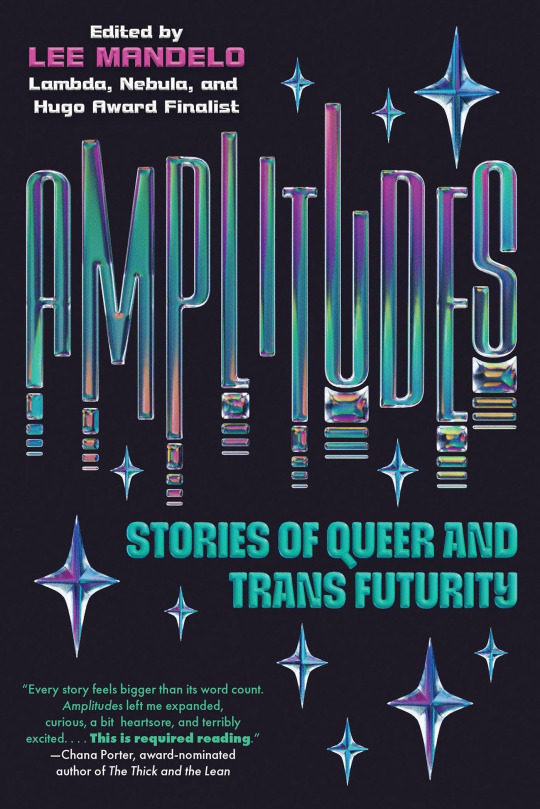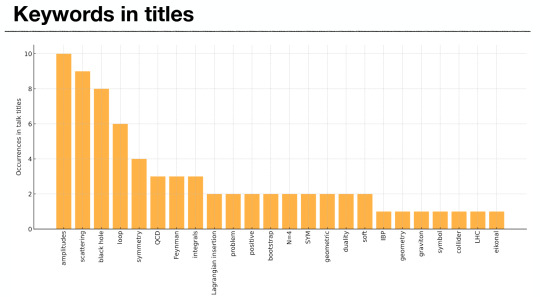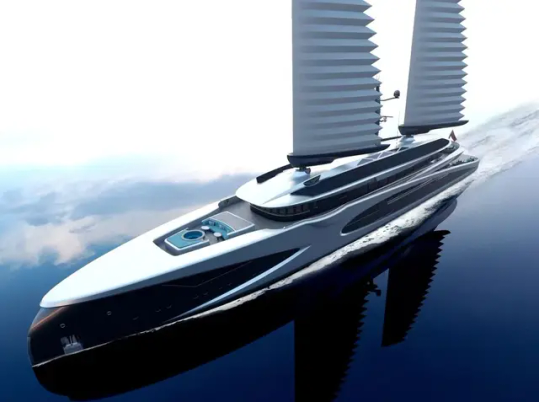#amplitudes
Explore tagged Tumblr posts
Text
Amplitudes: Stories of Queer and Trans Futurity, edited by Lee Mandelo

Revolutionary and visionary, these twenty-two speculative stories edited by Lambda, Nebula and Hugo finalist Lee Mandelo explore the vast potentialities of our queer and trans futures.
From self-styled knights fighting in dystopian city streets to conservationists finding love in the Appalachian forests; from social media posts about domestic “bliss” in a lottery-based, state-housing skyscraper to herding feral cats off of one’s scientific equipment; from street drugs that create doppelgangers to dance-club cruising at the edge of the galaxy—Amplitudes: Stories of Queer and Trans Futurity interrogates the farthest borders of the sci-fi landscape to imagine how queer life will look centuries in the future—or ten years from now.
Filled with brutal honesty, raw emotions, sexual escapades, and delightful whimsy, Amplitudes speaks to the longstanding tradition of queer fiction as protest. This essential collection serves as an evolving map of our celebrations, anxieties, wishes, pitfalls, and—most of all—our rallying cry that we're here, we're queer—and the future is ours!
Inventive, moving, and hopeful, this fresh anthology contains never before published stories by some of our most prominent and emerging LGBTQIA+ writers, including:
Esther Alter • Bendi Barrett • Ta-wei Chi, trans. Ariel Chu • Colin Dean • Maya Deane • Dominique Dickey • Katharine Duckett • Meg Elison • Paul Evanby • Aysha U. Farah • Sarah Gailey • Ash Huang • Margaret Killjoy • Wen-yi Lee • Ewen Ma • Jamie McGhee • Sam J. Miller • Aiki Mira, trans. CD Covington • Sunny Moraine • Nat X. Ray • Neon Yang • Ramez Yoakeim
#amplitudes: stories of queer and trans futurity#amplitudes#lee mandelo#trans book of the day#trans books#queer books#bookblr#booklr
24 notes
·
View notes
Text
Most Anticipated LGBTQ+ Adult Fiction: January-June 2025
Due to the delightfully large volume of titles, Romances will be getting their own post later this week! Mothers and Sons by Adam Haslett (January 7th) At forty, Peter, an asylum lawyer in New York City, is overworked and isolated. He spends his days immersed in the struggles of immigrants only to return to an empty apartment and occasional hook-ups with a man who wants more than Peter can give.…
#Afsana Mousavi#Amplitudes#Amy Shearn#Angel Eye#Animal Instinct#Anna-Marie McLemore#Blair Fell#Bury Our Bones in the Midnight Soil#But Not Too Bold#Caitlin Starling#Checked Out#Claire Lynch#Daniel Black#Dennis E. Staples#Disappoint Me#Don&039;t Sleep With the Dead#Eleanor Pilcher#Elizabeth Harris#Emerald Road#Emery Robin#Emily Austin#Emily Tesh#Erica Rose Eberhart#Exquisite Ruin#Freakslaw#Hache Pueyo#Hammajang Luck#Hungerstone#Isaac Fellman#Isaac&039;s Song
66 notes
·
View notes
Text

muppet joker reference in Amplitudes: Stories of Queer and Trans Futurity or am i crazy?
#the muppet joker#muppet joker#lee mandelo#amplitudes#amplitudes: stories of queer and trans futurity#queer#trans#muppets#nat x ray#lgbtq#nonbinary#transmasc#enby#lesbian#butch#i love you lee mandelo#thank you for this collection
20 notes
·
View notes
Text

Amplitudes: Stories of Queer and Trans Futurity
Edited by Lee Mandelo.
3 notes
·
View notes
Text
Amplitudes 2025 was this week, and I've been skimming slides in my free time. Here's the highlights:

View On WordPress
#academia#amplitudes#black hole#LIGO#mathematics#particle physics#quantum field theory#supersymmetry#theoretical physics
2 notes
·
View notes
Text
Webinar: Top 10 Digital Analytics Mistakes by Amplitude's Adam Greco and WillowTree's Jeremy Stern
Subscribe here: Check out upcoming events: ℹ Find out more about … source
0 notes
Text

Seven Sinewave Stripe Checkers
#checkered#seamless#loop#vj#visuals#sine wave#stripes#op art#black and white#hypnotic#trapcodetao#motion#artists on tumblr#geometry#amplitude#frequency#seven#7#chess#racing
44 notes
·
View notes
Text
Cyanobacteria, an ancient lineage of bacteria that perform photosynthesis, have been found to regulate their genes using the same physics principle used in AM radio transmission. New research published in Current Biology has found that cyanobacteria use variations in the amplitude (strength) of a pulse to convey information in single cells. The finding sheds light on how biological rhythms work together to regulate cellular processes.
Continue Reading.
#Science#Biology#Microbiology#Molecular Biology#Cyanobacteria#AM#Amplitude Modulation#Circadian Rhythm
76 notes
·
View notes
Text

“Even teenage vigilantes need a nap”
Through gritted teeth. It’s okay to post my oc content on here it’s my blog it’s my house. Anyway really proud of the lighting on this one and figured I’d share. This is the first time posting my own stuff on here but I’m trying to branch out. This is Amp she lives rent free in my brain.
#oc#oc art#entropy city#superhero oc#superhero#amp#amplitude#digital art#original character#amp entropy city
92 notes
·
View notes
Text
Study: Early dark energy could resolve cosmology’s two biggest puzzles
New Post has been published on https://thedigitalinsider.com/study-early-dark-energy-could-resolve-cosmologys-two-biggest-puzzles/
Study: Early dark energy could resolve cosmology’s two biggest puzzles


A new study by MIT physicists proposes that a mysterious force known as early dark energy could solve two of the biggest puzzles in cosmology and fill in some major gaps in our understanding of how the early universe evolved.
One puzzle in question is the “Hubble tension,” which refers to a mismatch in measurements of how fast the universe is expanding. The other involves observations of numerous early, bright galaxies that existed at a time when the early universe should have been much less populated.
Now, the MIT team has found that both puzzles could be resolved if the early universe had one extra, fleeting ingredient: early dark energy. Dark energy is an unknown form of energy that physicists suspect is driving the expansion of the universe today. Early dark energy is a similar, hypothetical phenomenon that may have made only a brief appearance, influencing the expansion of the universe in its first moments before disappearing entirely.
Some physicists have suspected that early dark energy could be the key to solving the Hubble tension, as the mysterious force could accelerate the early expansion of the universe by an amount that would resolve the measurement mismatch.
The MIT researchers have now found that early dark energy could also explain the baffling number of bright galaxies that astronomers have observed in the early universe. In their new study, reported today in the Monthly Notices of the Royal Astronomical Society, the team modeled the formation of galaxies in the universe’s first few hundred million years. When they incorporated a dark energy component only in that earliest sliver of time, they found the number of galaxies that arose from the primordial environment bloomed to fit astronomers’ observations.
“You have these two looming open-ended puzzles,” says study co-author Rohan Naidu, a postdoc in MIT’s Kavli Institute for Astrophysics and Space Research. “We find that in fact, early dark energy is a very elegant and sparse solution to two of the most pressing problems in cosmology.”
The study’s co-authors include lead author and Kavli postdoc Xuejian (Jacob) Shen, and MIT professor of physics Mark Vogelsberger, along with Michael Boylan-Kolchin at the University of Texas at Austin, and Sandro Tacchella at the University of Cambridge.
Big city lights
Based on standard cosmological and galaxy formation models, the universe should have taken its time spinning up the first galaxies. It would have taken billions of years for primordial gas to coalesce into galaxies as large and bright as the Milky Way.
But in 2023, NASA’s James Webb Space Telescope (JWST) made a startling observation. With an ability to peer farther back in time than any observatory to date, the telescope uncovered a surprising number of bright galaxies as large as the modern Milky Way within the first 500 million years, when the universe was just 3 percent of its current age.
“The bright galaxies that JWST saw would be like seeing a clustering of lights around big cities, whereas theory predicts something like the light around more rural settings like Yellowstone National Park,” Shen says. “And we don’t expect that clustering of light so early on.”
For physicists, the observations imply that there is either something fundamentally wrong with the physics underlying the models or a missing ingredient in the early universe that scientists have not accounted for. The MIT team explored the possibility of the latter, and whether the missing ingredient might be early dark energy.
Physicists have proposed that early dark energy is a sort of antigravitational force that is turned on only at very early times. This force would counteract gravity’s inward pull and accelerate the early expansion of the universe, in a way that would resolve the mismatch in measurements. Early dark energy, therefore, is considered the most likely solution to the Hubble tension.
Galaxy skeleton
The MIT team explored whether early dark energy could also be the key to explaining the unexpected population of large, bright galaxies detected by JWST. In their new study, the physicists considered how early dark energy might affect the early structure of the universe that gave rise to the first galaxies. They focused on the formation of dark matter halos — regions of space where gravity happens to be stronger, and where matter begins to accumulate.
“We believe that dark matter halos are the invisible skeleton of the universe,” Shen explains. “Dark matter structures form first, and then galaxies form within these structures. So, we expect the number of bright galaxies should be proportional to the number of big dark matter halos.”
The team developed an empirical framework for early galaxy formation, which predicts the number, luminosity, and size of galaxies that should form in the early universe, given some measures of “cosmological parameters.” Cosmological parameters are the basic ingredients, or mathematical terms, that describe the evolution of the universe.
Physicists have determined that there are at least six main cosmological parameters, one of which is the Hubble constant — a term that describes the universe’s rate of expansion. Other parameters describe density fluctuations in the primordial soup, immediately after the Big Bang, from which dark matter halos eventually form.
The MIT team reasoned that if early dark energy affects the universe’s early expansion rate, in a way that resolves the Hubble tension, then it could affect the balance of the other cosmological parameters, in a way that might increase the number of bright galaxies that appear at early times. To test their theory, they incorporated a model of early dark energy (the same one that happens to resolve the Hubble tension) into an empirical galaxy formation framework to see how the earliest dark matter structures evolve and give rise to the first galaxies.
“What we show is, the skeletal structure of the early universe is altered in a subtle way where the amplitude of fluctuations goes up, and you get bigger halos, and brighter galaxies that are in place at earlier times, more so than in our more vanilla models,” Naidu says. “It means things were more abundant, and more clustered in the early universe.”
“A priori, I would not have expected the abundance of JWST’s early bright galaxies to have anything to do with early dark energy, but their observation that EDE pushes cosmological parameters in a direction that boosts the early-galaxy abundance is interesting,” says Marc Kamionkowski, professor of theoretical physics at Johns Hopkins University, who was not involved with the study. “I think more work will need to be done to establish a link between early galaxies and EDE, but regardless of how things turn out, it’s a clever — and hopefully ultimately fruitful — thing to try.”
“We demonstrated the potential of early dark energy as a unified solution to the two major issues faced by cosmology. This might be an evidence for its existence if the observational findings of JWST get further consolidated,” Vogelsberger concludes. “In the future, we can incorporate this into large cosmological simulations to see what detailed predictions we get.”
This research was supported, in part, by NASA and the National Science Foundation.
#2023#amplitude#Astronomy and astrophysics#Astrophysics#author#big bang#billion#cities#consolidated#cosmology#Dark#dark energy#dark matter#direction#driving#energy#Environment#Evolution#form#Foundation#framework#Future#galaxies#Galaxy#galaxy formation#gas#gravity#how#Hubble#issues
21 notes
·
View notes
Text

Requested by @logan5124
#Amplitude#playstation exclusive#video games#gaming#video game polls#polls#tumblr polls#rhythm games#rhythm
17 notes
·
View notes
Text
Inside an Anthology: Amplitudes ed. by Lee Mandelo
Today on the site I’m delighted to help offer a peek inside the upcoming trans SFF anthology Amplitudes: An Anthology of Trans and Queer Futurity, edited by Lee Mandelo and releasing May 27th from Erewhon Books! Here’s a little more about the collection: Amplitudes: Stories of Queer and Trans Futurity, ed. by Lee Mandelo (May 27th) From self-styled knights fighting in dystopian city streets to…
#Aiki Mira#Amplitudes#Anthology#Aysha U. Farah#Bendi Barrett#Erewhon Books#Esther Alter#Ewen Ma#Jaime McGhee#Katharine Duckett#Lee Mandelo#Margaret Killjoy#Meg Elison#Nat X Ray#Ramez Yoakeim#Sarah Gailey#SFF#Transgender#Wen-yi Lee
21 notes
·
View notes
Text
Amplitudes 2024, Continued
Completing this year's Amplitudes conference coverage
I’ve now had time to look over the rest of the slides from the Amplitudes 2024 conference, so I can say something about Thursday and Friday’s talks. Thursday was gravity-focused. Zvi Bern’s review talk was actually a review, a tour of the state of the art in using amplitudes techniques to make predictions for gravitational wave physics. Bern emphasized that future experiments will require much…
View On WordPress
#academia#amplitudes#black hole#gravity#LIGO#mathematics#particle physics#quantum field theory#quantum gravity#string theory
4 notes
·
View notes
Text







"Amplitude"
M51 Concept
#art#superyacht#design#ocean#luxury yacht#sea#megayacht#boat#ship#architecture#interiors#interiordesign#yacht concept#sailing yacht#sailing#billionaire#billionairelife#amplitude#M51
26 notes
·
View notes
Text
never become a self shipper that shit ruins YOUR LIFE!!! (< having a lot of fun actually)
#AGRHRHR i need that cowboy and weird electric freak......#also currently looking at electricity related words and stuff to decided the polycule name#i had considered electric polycule. but im pretty sure thats what the electric dreams polycule is known as. altho tbh i think the#electric dreams polycule needs a diff name. unless there is a diff name? but tbh idk#ANYWYAS BACK TO SELFSHIPPING#moot mentioned amplitude which i thought was cute#also hm hm#thinking about electrovolt for the combined names for electro x my sona#or just going electric volt#nvm felt slightly cringe there SILENCE!!! we must be free!!#voltrix rambles#anyways i will ramble more in a bit
10 notes
·
View notes
Photo

8:02 AM EDT March 26, 2025:
Medusa - "Transient Amplitude" From the compilation album Mojo Presents Heavy Nuggets III (May 27, 2014)
Last song scrobbled from iTunes at Last.fm
Giveaway with the July 2014 issue of Mojo. "Fifteen Gems From the Hard Rock Underground."
Previously-unreleased Hippie-Satan 1975 freak-jam spuzz from Chicago, finally unleashed in 2014.
--

<540x540>
3 notes
·
View notes